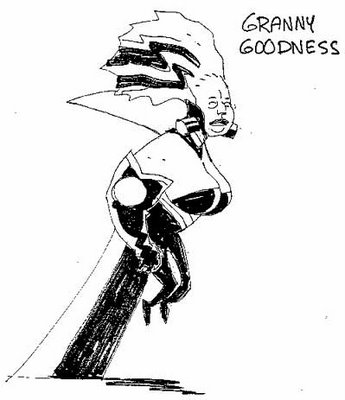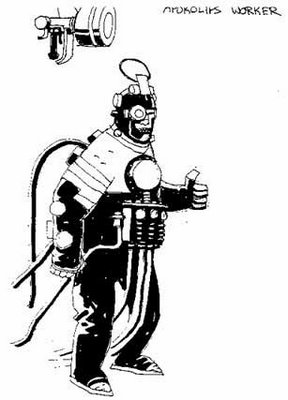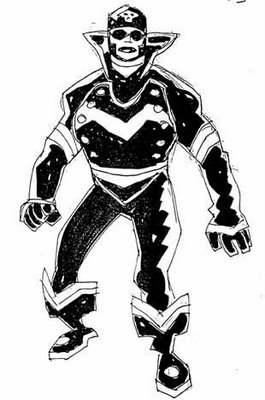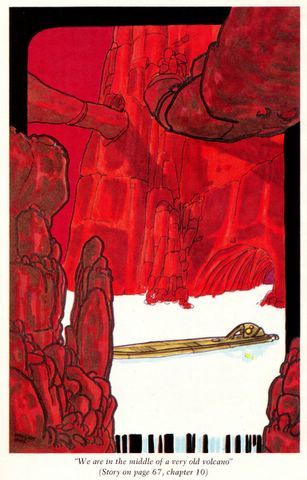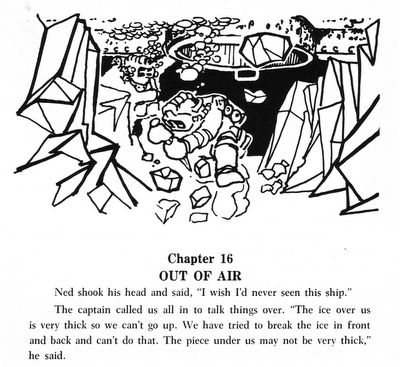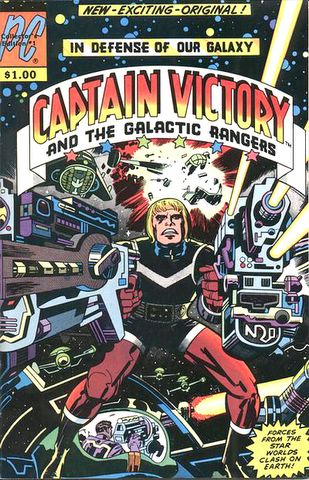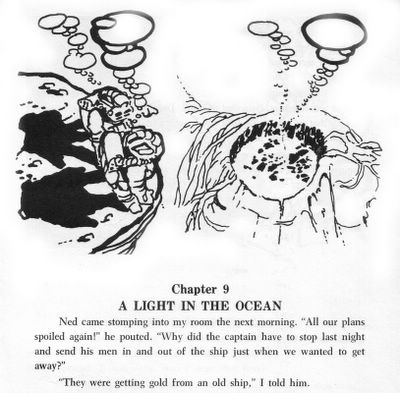Probes designed to find life on Mars do not drill deep enough to find the living cells that scientists believe may exist well below the surface of Mars. Although current drills may find essential tell-tale signs that life once existed on Mars, cellular life could not survive the radiation levels for long enough any closer to the surface of Mars than a few metres deep – beyond the reach of even state-of-the-art drills.
"It just isn’t plausible that dormant life is still surviving in the near-subsurface of Mars – within the first couple of metres below the surface – in the face of the ionizing radiation field. Finding life on Mars depends on liquid water surfacing on Mars, but the last time liquid water was widespread on Mars was billions of years ago. Even the hardiest cells we know of could not possibly survive the cosmic radiation levels near the surface of Mars for that long."
The best places to look for living cells on Mars would be within the ice at Elysium because the frozen sea is relatively recent – it is believed to have surfaced in the last five million years – and so has been exposed to radiation for a relatively short amount of time. link
Modelling the surface and subsurface Martian radiation environment: Implications for astrobiology. 2007. L. R. Dartnell et al. GEOPHYSICAL RESEARCH LETTERS: 34
Wednesday, January 31, 2007
Happy National Gorilla Suit Day!
What better way to celebrate NGSD than with Elvis Costello singing "Monkey to Man", complete with gorilla suits and go-go dancing bikini girls:
Sunday, January 28, 2007
Saturday, January 27, 2007
Born This Day: Lewis Carrol

The looking glass
Lewis Carroll (Jan. 27, 1832 – Jan. 14, 1898) was the pen name of(Charles Lutwidge Dodgson), an English logician, mathematician, photographer, and novelist, who wrote Alice's Adventures in Wonderland (1865) and its sequel.After graduating from Christ Church College, Oxford in 1854, Dodgson remained there, lecturing on mathematics and writing treatises until 1881. As a mathematician, Dodgson was conservative. He was the author of a fair number of mathematics books, e.g "A Syllabus of Plane Algebraical Geometry" (1860). As a logician, he was more interested in logic as a game than as an instrument for testing reason. link
The drawings of Alice are from the 1975 portfolio, “Alice.Alice..Alice…By Dean Motter—wonderland in ten regions”, published by Iconoclast Imageworks and distributed by the fondly remembered Bakka Book Stores in Toronto.
I stumbled across this tucked into the upper shelf of a now long-gone book store before Motter had started to make his mark in the comic book field.
Friday, January 26, 2007
Air Force Unveils New Ray Gun

Mars Attacks! © Current Copyright Holder

Beauty Blaze & Polar Man © DC Comics
The system uses electromagnetic millimeter waves, which can penetrate only 1/64th of an inch of skin, just enough to cause discomfort. By comparison, microwaves used in the common kitchen appliance penetrate several inches of flesh. Link from Live Science
Stan Ridgeway's "Ring of Fire":
Wednesday, January 24, 2007
Born This Day: Discoverer of Krypton
Morris William Travers (Jan 24, 1872–Aug 25, 1961), was an English chemist who, while working with Sir Willam Ramsay in London, discovered the element krypton (30 May 1898). The name derives from the Greek word for "hidden."

It was a fraction separated from liquified air, which when placed in a Plücker tube connected to an induction coil yielded a spectrum with a bright yellow line with a greener tint than the known helium line and a brilliant green line that corresponded to nothing seen before. link To make a long story short, after Phantom Girl finds an ancient tablet at an archaeological project on a little island in the Atlantic Ocean in the 30th century, the LSH split into two teams & set off in Time Bubbles to Earth & Krypton's “remote past” to investigate “The War Between Krypton and Earth”.

As it turns out a group of Kryptonian scientists set up shop on Earth because they were persecuted back home.
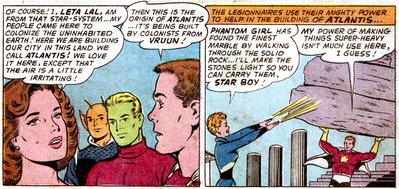
Too bad the uninhabited Earth had already been colonized by the Vruunians who had established a town called Atlantis. After the "Civil War of the Legion" that saw the two teams taking sides with their new friends, came this inevitable ending after Brainiac 5 uses "artifical evolution" to turn the Atlanteans into mermen:


It was a fraction separated from liquified air, which when placed in a Plücker tube connected to an induction coil yielded a spectrum with a bright yellow line with a greener tint than the known helium line and a brilliant green line that corresponded to nothing seen before. link To make a long story short, after Phantom Girl finds an ancient tablet at an archaeological project on a little island in the Atlantic Ocean in the 30th century, the LSH split into two teams & set off in Time Bubbles to Earth & Krypton's “remote past” to investigate “The War Between Krypton and Earth”.

As it turns out a group of Kryptonian scientists set up shop on Earth because they were persecuted back home.

Too bad the uninhabited Earth had already been colonized by the Vruunians who had established a town called Atlantis. After the "Civil War of the Legion" that saw the two teams taking sides with their new friends, came this inevitable ending after Brainiac 5 uses "artifical evolution" to turn the Atlanteans into mermen:

LSH & Superboy © DC Comics
Tuesday, January 23, 2007
Cringe At The Sight of B'wana Beast!
Who'da thoughts that we'd ever see an animated B'wana Beast? He shows up at aboout the 2:15 mark in the clip below. Until then you can enjoy Zatanna's antics.
Sunday, January 21, 2007
Launched This Day: 1st Atomic Sub
One this day in 1954, the first atomic submarine, the U.S.S. Nautilus, was launched at Groton, Connecticut. All vessels previously known as "submarines" were in fact only submersible craft. Because of the nuclear power plant, the Nautilus could stay submerged for months at a time, unlike diesel-fueled subs, whose engines required vast amounts of oxygen. Nautilus demonstrated her capabilities in 1958 when she sailed beneath the Arctic icepack to the North Pole. Scores of nuclear submarines followed Nautilus, replacing the United States' diesel boat fleet. After patrolling the seas until 1980, the Nautilus is back home at Groton. link
Arctic Submarine TimelineAtomic Submarine has just been released by Criterion(!) in a nice, new boxed set called "Monsters & Madmen" along with The First Man Into Space, The Haunted Strangler, & Corridors of Blood all under a beautiful cover by Darwyn Cooke (we highlighted another of his Criterion covers HERE). The DVD Journal has reviewed the set and has this to say:
"The Atomic Submarine (72 minutes, Criterion no. 366) is to James Cameron's The Abyss what It! The Terror from Beyond Space is to Ridley Scott's Alien. When a nuclear-powered submarine, the Tiger Shark, sets out to investigate a series of mysterious disappearances near the Arctic Circle, its fearless crew finds itself besieged by electrical storms, an Unidentified Floating Saucer, and lots of hairy tentacles."Tomorrow’s Fear Becomes Today’s Nightmare!:
"There's something sublime in the hairy eyeball's "telepathic" baritone introduction to Arthur Franz: "So, Commander Holloway, as you Earth inhabitants would express it, we meet ... face to face!" Let's not forget the bombastic narrator ("Adapt a complicated guidance system to a huge ballistic rocket, convert it to a water-to-air intercept missile? It was foolish, it was insane, it was fantastic! But it was their only hope. And the Earth's only hope!"). And the Theremin-heavy musical score adds to the cheese factor with "electro-sonic" gusto."
Saturday, January 20, 2007
Steranko's Stolen Art
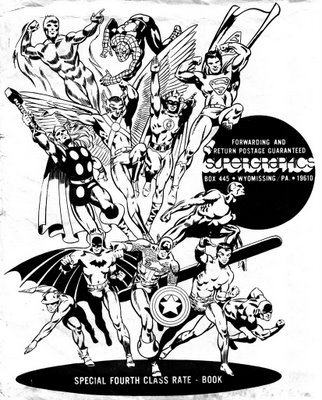
Characters © DC & Marvel Comics; Art © Steranko
"Likewise, I did NOT give Harry and the school the FOOM Poster original to sell or give away. It was Harry's understanding that his unique pop-culture collection be FOREVER maintained in his name. Instead, the institution has NEVER used the material for any significant purpose, except to sell it off, which is unreasonable, disgraceful, and unethical. What was to be a LIVING TRIBUTE to one of the founders of the Golden Age of Comics became a travesty, smearing the school and those involved with the scum of greed, lies, and hypocrisy."The stolen art was reproduced as a color poster for Marvel’s “FOOM” (Friends of ‘ol Marvel) but I received the above piece on the envelope that contained one of Steranko’s two volumes of “The History of Comics”—both highly recommended if you can find them anywhere.
Friday, January 19, 2007
The Flight of Bats

“The assumption has always been that bats evolved from some sort of flying squirrel-type animals,” says Swartz. “Gliding has evolved in mammals seven times. That tells us that it’s really easy for an animal with skin to evolve into a glider, but going from a square gliding wing to a long, skinny flapping wing has not happened seven times. It might have happened once. And now it doesn’t look like bats have any relationship to these gliding things.”
Bat wings are highly articulated, with more than two dozen independent joints and a thin flexible membrane covering them. Birds and insects can fold and rotate their wings during flight, but bats have many more options. Their flexible skin can catch the air and generate lift or reduce drag in many different ways. During straightforward flight, the wing is mostly extended for the down stroke, but the wing surface curves much more than a bird’s does – giving bats greater lift for less energy. During the up stroke, the bats fold the wings much closer to their bodies than other flying animals, potentially reducing the drag they experience. The wing’s extraordinary flexibility also allows the animals to make 180-degree turns in a distance of less than half a wingspan. link
Direct measurements of the kinematics and dynamics of bat flight. 2007. Xiaodong Tian et al 2006 Bioinspir. Biomim. 1 S10-S18
Tuesday, January 16, 2007
Vaughn Bode's 20,000 Leagues Under the Sea: Part 7
Back in the 60’s Vaughn Bodé illustrated a number of classics that had been rewritten for “reading challenged” kids. The books were published by Frank E. Richards and sold exclusively to schools.
Because these books are almost impossible to find at reasonable prices I’ll be posting all the illos from the best book of the bunch, “Jules Verne’s ’20,000 Leagues Under The Sea” in eight installments.
Read: Part 1 Part 2 Part 3 Part 4 Part 5 Part 6 Part 7 Part 8
Because these books are almost impossible to find at reasonable prices I’ll be posting all the illos from the best book of the bunch, “Jules Verne’s ’20,000 Leagues Under The Sea” in eight installments.
Read: Part 1 Part 2 Part 3 Part 4 Part 5 Part 6 Part 7 Part 8
All art © the estate of Vaughn Bodé
Sunday, January 14, 2007
Idaho To Drive Wolves To Point Of Extinction
Idaho's governor said Thursday he will support public hunts to kill all but 100 of the state's gray wolves after the federal government strips them of protection under the Endangered Species Act.
Gov. C.L. “Butch'' Otter told The Associated Press that he wants hunters to kill about 550 gray wolves. That would leave about 100 wolves, or 10 packs, according to a population estimate by state wildlife officials. The 100 surviving wolves would be the minimum before the animals could again be considered endangered.
“I'm prepared to bid for that first ticket to shoot a wolf myself,'' Otter said earlier Thursday during a rally of about 300 hunters. The hunters, many wearing camouflage clothing and blaze-orange caps, applauded wildly during his comments.
Suzanne Stone, a spokeswoman for the advocacy group Defenders of Wildlife in Boise, said Otter's proposal would return wolves to the verge of eradication. “Essentially he has confirmed our worst fears for the state of Idaho: That this would be a political rather than a biological management of the wolf population,'' Stone said. “There's no economic or ecological reason for maintaining such low numbers. It's simple persecution.'' link from Live Science.com
Where’s Larry Talbot when you need him…?
Gov. C.L. “Butch'' Otter told The Associated Press that he wants hunters to kill about 550 gray wolves. That would leave about 100 wolves, or 10 packs, according to a population estimate by state wildlife officials. The 100 surviving wolves would be the minimum before the animals could again be considered endangered.
“I'm prepared to bid for that first ticket to shoot a wolf myself,'' Otter said earlier Thursday during a rally of about 300 hunters. The hunters, many wearing camouflage clothing and blaze-orange caps, applauded wildly during his comments.
Suzanne Stone, a spokeswoman for the advocacy group Defenders of Wildlife in Boise, said Otter's proposal would return wolves to the verge of eradication. “Essentially he has confirmed our worst fears for the state of Idaho: That this would be a political rather than a biological management of the wolf population,'' Stone said. “There's no economic or ecological reason for maintaining such low numbers. It's simple persecution.'' link from Live Science.com
Where’s Larry Talbot when you need him…?
Saturday, January 13, 2007
New SETI Search Looks For Warring Aliens
Do extraterrestrials sweep their skies with radar to scan for incoming missiles?If so, Avi Loeb of the Harvard-Smithsonian Center for Astrophysics in Cambridge, Massachusetts, thinks he can find the radio signals leaked from warring alien civilizations.
Loeb believes he can detect the leaked signals by piggybacking his search on a new generation of radio telescopes designed to study low-frequency radio emissions in the distant, infant universe.
He and his colleagues hope to test the theory with the Mileura Wild-Field Array currently under construction in Australia and is slated to start operations in 2008.
In its current configuration, the array will be sensitive to any Earth-like civilizations that may exist on a planet orbiting one of about a thousand stars up to 30 light-years away, Loeb said. link
And the war rages on...:
Friday, January 12, 2007
New Life Forms Found In Arctic Ocean
Artic Ocean researchers have discovered a new group of microscopic organisms, which they have baptized "picobiliphytes": pico because of their extremely small size, measured in millionths of a meter, bili because they contain biliproteins, highly fluorescent substances that transform light into biomass, and phyte meaning they are plants.
The discovery came from carefully analyzing DNA sequences belonging to vast communities of micro-organisms living in the ocean. "There was one group of sequences that just didn't line up with any of the known groups," explains Dr. Lovejoy. "In fact, the divergence of this group from known organisms is as great as the difference between land plants and animals," adds the scientist. link
Picobiliphytes: A Marine Picoplanktonic Algal Group with Unknown Affinities to Other Eukaryotes. 2006. F. Not et al. Science 315: 253-255.
Picobiliphytes Will Rock You!:
The discovery came from carefully analyzing DNA sequences belonging to vast communities of micro-organisms living in the ocean. "There was one group of sequences that just didn't line up with any of the known groups," explains Dr. Lovejoy. "In fact, the divergence of this group from known organisms is as great as the difference between land plants and animals," adds the scientist. link
Picobiliphytes: A Marine Picoplanktonic Algal Group with Unknown Affinities to Other Eukaryotes. 2006. F. Not et al. Science 315: 253-255.
Picobiliphytes Will Rock You!:
Thursday, January 11, 2007
New Species of Catfish Named After Batman
Ichthyologist Pablo Lehmann, of the Pontificia Universidade Catolica do Rio Grande do Sul, has named the species Otocinclus batmani in a paper in the current volume of the journal Neotropical Ichthyology. It has a dark marking on its tail resembling the Batman logo.
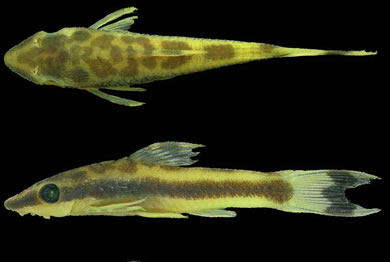
"The name batmani, alludes to Bob Kane's hero Batman of the comic adventures, which had a bat shape for his symbol, referring to the single W- or bat-shaped vertical spot on the caudal fin", wrote Lehmann.
The new species was discovered from the Rio Pure in Colombia and two creeks draining into the Rio Amazonas near Iquitos in Peru. Like other members of the genus, this species is small, with most of the type specimens collected measuring just under 4cm long. link

"The name batmani, alludes to Bob Kane's hero Batman of the comic adventures, which had a bat shape for his symbol, referring to the single W- or bat-shaped vertical spot on the caudal fin", wrote Lehmann.
The new species was discovered from the Rio Pure in Colombia and two creeks draining into the Rio Amazonas near Iquitos in Peru. Like other members of the genus, this species is small, with most of the type specimens collected measuring just under 4cm long. link
Otocinclus batmani, a new species of hypoptopomatine catfish (Siluriformes: Loricariidae) from Colombia and Peru. 2006. P.A. Lehman. Neotropical Ichthyology, 4(4): 379-383.
Wednesday, January 10, 2007
Hypothetical "God Particle" Closer To Discovery
The hypothetical Higgs boson, often dubbed the "God particle", is fundamental to our understanding of the Universe but has yet to be detected.The Higgs boson has been proffered to explain the mystery of why other particles have mass, and forms the missing piece in the puzzle that is the Standard Model - the current theory used to describe the fundamental nature of matter.
For years, researchers have been searching the sub-atomic "soup" created when particles are smashed together in colliders - but no sign of the Higgs has been seen. In obtaining a more precise predicted mass for the Higgs, the particle's existence can be confirmed or ruled out within two to three years, scientists believe.
The calculation has been done by making the finest measurement to date of the mass of another elementary particle, one that is well known, the W boson. The W boson is the carrier of weak nuclear force, one of the fundamental forces in nature, and its mass is believed to be linked to that of the Higgs'.
"And if we don't find it, it is going to be back to the drawing board for particle physics." link
Sunday, January 7, 2007
Belated Birthday Wishes To Tom Bagley


Art © Tom Bagley
Tom's art at Gigposters.com
Tom's music in Forbidden Dimension
Hey, Isn’t that Jackson Phibes himself singing?
Vaughn Bodé’s 20,000 Leagues Under The Sea: Part 6
Back in the 60’s Vaughn Bodé illustrated a number of classics that had been rewritten for “reading challenged” kids. The books were published by Frank E. Richards and sold exclusively to schools.
Because these books are almost impossible to find at reasonable prices I’ll be posting all the illos from the best book of the bunch, “Jules Verne’s ’20,000 Leagues Under The Sea” in eight installments.
Read: Part 1 Part 2 Part 3 Part 4 Part 5 Part 6 Part 7 Part 8
Because these books are almost impossible to find at reasonable prices I’ll be posting all the illos from the best book of the bunch, “Jules Verne’s ’20,000 Leagues Under The Sea” in eight installments.
Read: Part 1 Part 2 Part 3 Part 4 Part 5 Part 6 Part 7 Part 8
All art © the estate of Vaughn Bodé
Saturday, January 6, 2007
Seeing Into The Future With Neural Substrates
Researchers from Washington University in St. Louis have used advanced brain imaging techniques to show that remembering the past and envisioning the future may go hand-in-hand, with each process sparking strikingly similar patterns of activity within precisely the same broad network of brain regions.

"Our findings provide compelling support for the idea that memory and future thought are highly interrelated and help explain why future thought may be impossible without memories."

Link: Neural substrates of envisioning the future. 2006. Karl K. Szpunar et al. PNAS, published online Jan. 3, 2007

"Our findings provide compelling support for the idea that memory and future thought are highly interrelated and help explain why future thought may be impossible without memories."

Dream Girl, Insect Queen, Superboy & LSH © DC Comics
Link: Neural substrates of envisioning the future. 2006. Karl K. Szpunar et al. PNAS, published online Jan. 3, 2007
Subscribe to:
Comments (Atom)















